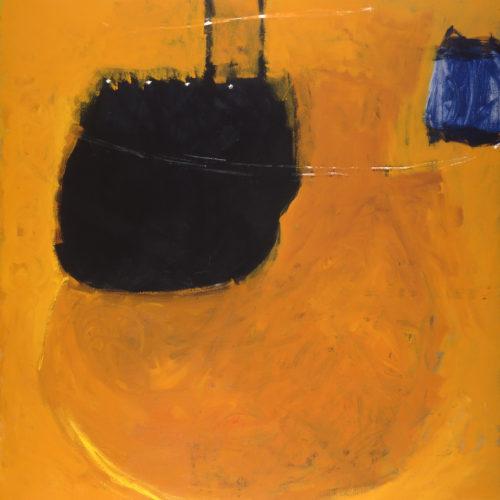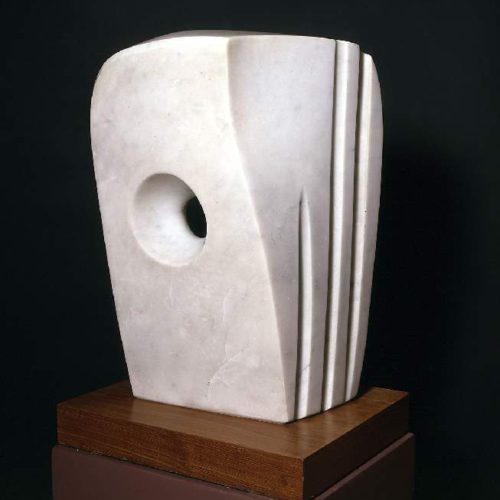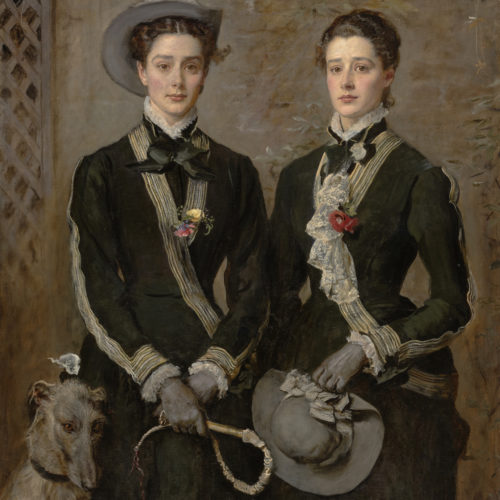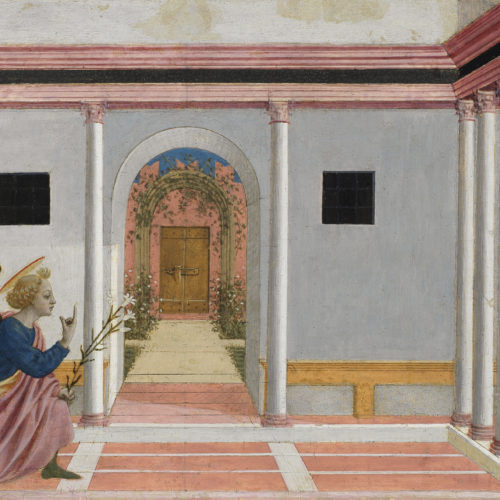- How to interpret the ideas of artists.
- Taking creative risks.
- Investigating, exploring and testing expressively.
- Visually exploiting the differences between art and design.
- Expressive knowledge of properties of materials and processes for students to select techniques and control their outcomes.
Each resource provides a set of learning materials to support these elements:
- Close Encounter: critically examine
- Discuss: think and discuss ideas
- Create: develop their own artwork through artist-led virtual workshops or ideas
- Reflect: concluding with an opportunity to reflect and evaluate their work
Let’s start by noticing the shapes and forms in the composition of Roger Hilton’s ‘Large Orange (Newlyn)‘.
- Look at how these are placed within the composition.
- Does the painting have areas that are busier or quieter?
Look closely at the range of colour.
- Do you think the artist selected these colours for a specific purpose
- What do you think that purpose is?
© The estate of Roger Hilton/DACS, All Rights Reserved, 2021
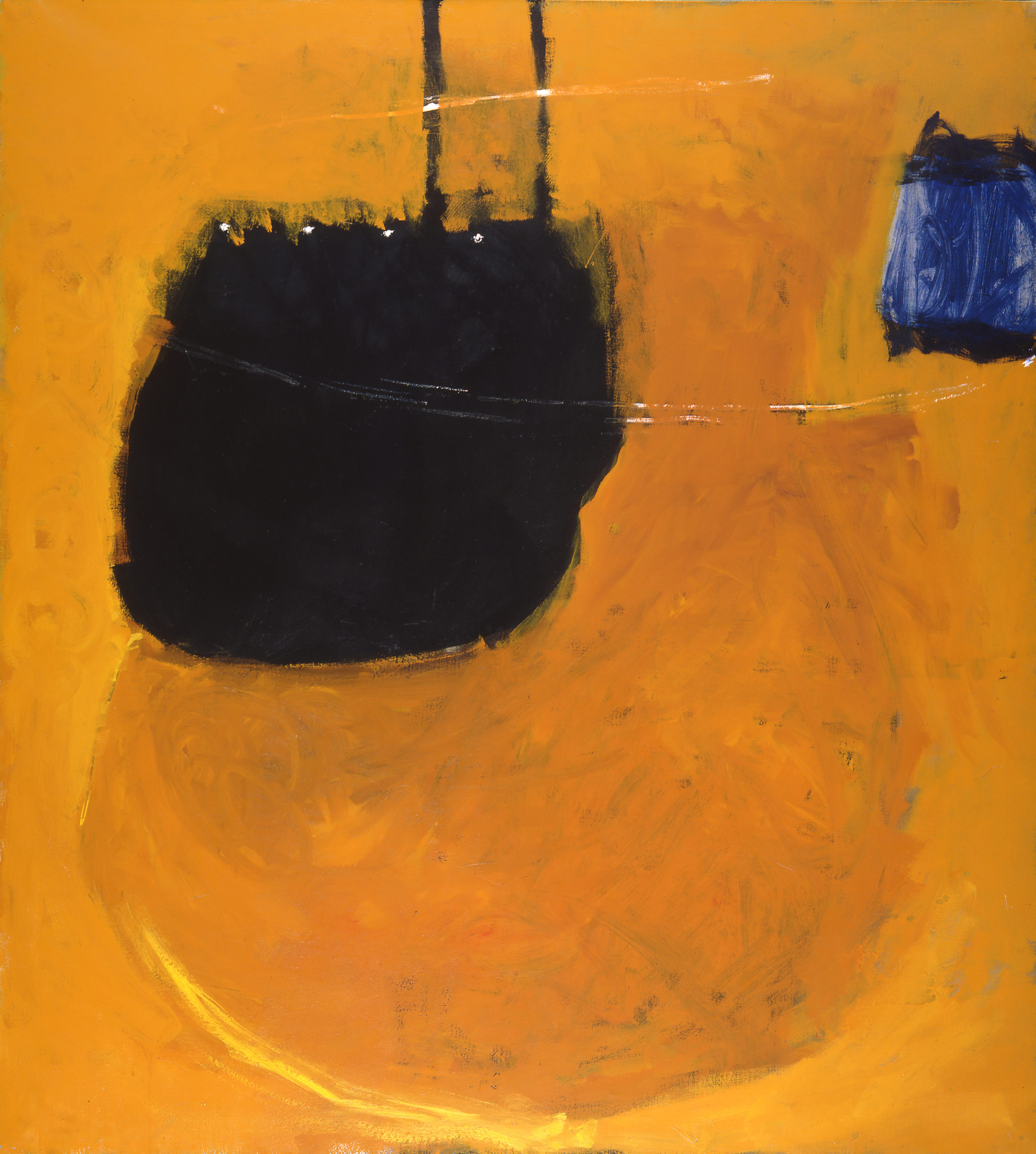
Imagine the painting in other colour variations.
- How might it look and how would it have an effect on the viewer’s response?
- It might help you to associate different colours with different moods and temperatures. You could make a mood colour chart.
Are there places where the paint is applied more vigorously or more thinly? Is the canvas visible in any areas?
Often we try to find meaning in a visual world through a set of known identifiable ‘realistic’ objects, people or places, but do you think this is the only way of experiencing what we see in abstract paintings?
Try approaching this painting in the same way we might listen to a piece of music. Experiment with matching this painting to pieces of music.
You might like to explore our Dancing with Art resource.
Image © Estate of Roger Hilton. All rights reserved, DACS 2021; image © The Fitzwilliam Museum, Cambridge
As a small group, talk through how these feature in the painting: circles and ellipses.
- What are the elements of a circle and how is this line descriptive of an action?
- What would this painting be like if the dominant shapes were squares?
Discuss the areas that have ‘tension’. How does Hilton create this?
Translate this painting into another art form. You might dance or act this painting, or you might like to create some music or a film. What sensations arise when you are working on your own ‘Large Orange’ inspired artforms?
Discover abstract painting techniques in this video with Fitzwilliam studio artist Nathan Huxtable.
More creative suggestions
From a selection of coloured papers and cards, cut or tear a range of shapes similar to those in the painting and experiment with your composition on an A4 or A3 page in your sketchbook. You could photograph your compositions before you rearrange them.
Review your compositions and select one to glue into your sketchbook.
Now recreate your collage composition using oil pastels, acrylic paints and pencils. Think carefully about the order that you apply your colours and think about your successive layers.
Which art materials resist others? You can experiment with diluting your acrylic paint in water and PVA glue to create a glaze. You can scratch through these with a pencil or cocktail stick or the other end of a paintbrush. This is called ‘sgraffito’.
Your dry painting could be drawn on in chalks, pastels, pencil, or charcoal but remember to use a fixative to keep it from smudging.
If you enjoy digital art you can experiment with effects and layers. Remember that the smudge and erase tools are useful to reveal layering.
Think about the processes and techniques you have been experimenting with and make an ordered log book entry, demonstrating how you took risks and tried new materials and applications. Were there parts of the process that you found more challenging and how could you overcome these?
Reflect on the abstract elements in your own artwork and select words to create a collage of text. You could cut these words from magazines, and create a descriptive collage of your artwork. Think about sounds that describe your artwork and record them on your phone, or take a series of photographs in detail to examine the tension and harmony in your composition.
Download our Abstraction: Painting scheme of work as a PDF.
This resource has been designed for teaching within your classroom and not to be used for any other purposes without the express permission of the Fitzwilliam Museum.
Some of the artists featured are in copyright and have been included with the permission of the relevant rights holders.
The copyright in all the images remains the property of The Fitzwilliam Museum, University of Cambridge.
